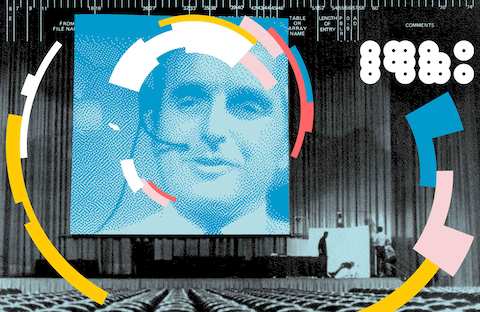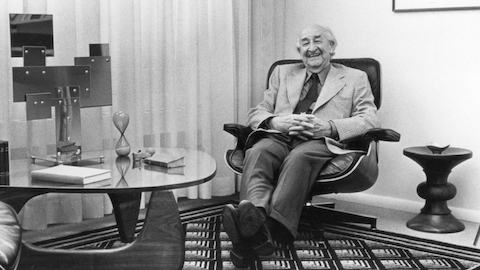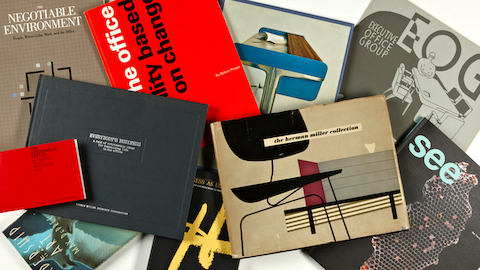In 1968, the researcher Douglas Engelbart debuted what would become the computer of the future at the Joint Computer Conference in San Francisco, California. Based in part on a dream, Engelbart created a personal computer not all that different than what we use today. It had a screen and keyboard, capabilities like hypertext, WYSIWYG word processing, dynamic file linking, videoconferencing, the first-ever mouse, and even a sort of proto-PowerPoint. But for all the horsepower and invention in the machine, which had its own large computational hub 40 miles away, it wasn’t the programming that made history. It was the interface.
Remember that in 1968, computers were massive punch-card-fed mainframes with intricate circuitry—think the Apollo 11 moon mission—the kinds of machines used primarily to do complex calculations for the government, scientists, the military, and corporations. Computers were for institutions, not for people.
Engelbart, Director of the Augmentation Research Center at Stanford Research Institute (SRI), and his oN-Line System—or NLS, for short—offered a new vision of how man and machine might interact. The computer’s screen interface itself provided a revelatory new way to visually organize information, and included a real stroke of genius: the first mouse. Suddenly, a person could engage with computers by using her hands and fingers to directly manipulate text and graphics rendered on a screen, an approach light years beyond the dissociative system common at the time. It was an era-defining event—the 1,000-plus attendees at what would be dubbed “the Mother of all Demos” gave the man a standing ovation—because Engelbart had begun to bridge the chasm between biology and circuitry, creating real-time interactivity based on human movement. And he unleashed his new vision of man and machine on a hacked-together Eames Shell Chair, a one-off console designed by researchers at Herman Miller, and an improvised Naugahyde patch functioning as the world’s first mouse pad.
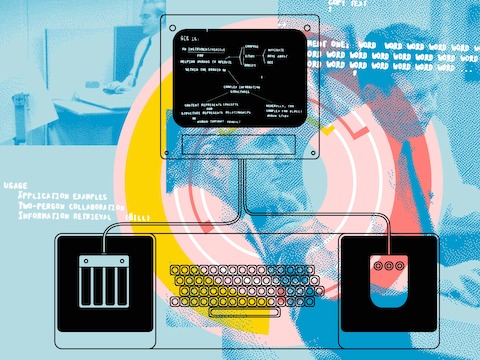
In the 1960s, Herman Miller was developing furniture for a new kind of office. Employing a cadre of psychologists, architects, designers, and other specialists, the company had been closely examining the infrastructure and spaces needed by the modern office worker. This accumulated knowledge premiered in 1964 with the Action Office System, a complete reimagination of the workplace. Action Office consisted of partitions, shelving, desks of a variety of heights, filing systems, tabletop areas, lighting, and more that could be flexibly arranged for each individual and task. It was an office designed to fit the complex and ever-shifting needs of modern workers, signaling that the days of a phone and typewriter plopped on a desk, without concern for efficiency, comfort, and social dynamics, were gone.
It was clear that Engelbart and Action Office designers Robert Propst and Jack Kelley were working on parallel tracks, shepherding a heightened sensitivity of the human form into their respective fields. In the lead-up to the Mother of All Demos, Engelbart recognized Herman Miller’s work as complementary to his own goal to facilitate, as he explained it, “better solutions, faster solutions, solutions to more complex problems, better use of human capabilities.” When Engelbart called Herman Miller to help design both a new office at SRI and the furniture for the demo, Kelley was a natural partner.
Upon visiting Engelbart and his team at Stanford, Kelley’s task quickly became apparent. As he put it, “a human affect hardware gap has been created due to great emphasis on computer performance and little or no attention paid to the performance of the user.” Machine was taking precedence over man.
The NLS, however, gave main billing to something else: the UX. By focusing on and cultivating the ease of the user experience, Engelbart had made a huge step forward. Kelley proved a sympathetic collaborator and the emerging synthesis of UX and furniture design facilitated not just the NLS’s new interface, but it made the whole technology more approachable and easier-to-use. Kelley designed a detachable molded tray console to accommodate the keyboard, mouse, and the xylophone-like keyset; the console could be attached to the chair or set on a table. After noticing that the mouse had difficulty tracking accurately on hard surfaces, he lined the console’s right side with Naugahyde; the synthetic swatch launched a thousand mousepads. He also created several scenarios for the system’s 40-pound cathode ray tube screen so the user could either sit or stand.
“If Engelbart was advancing the mind through technology—‘bootstrapping,’ as he called it—Herman Miller was promoting its own kind of augmented body intelligence through furniture. ”
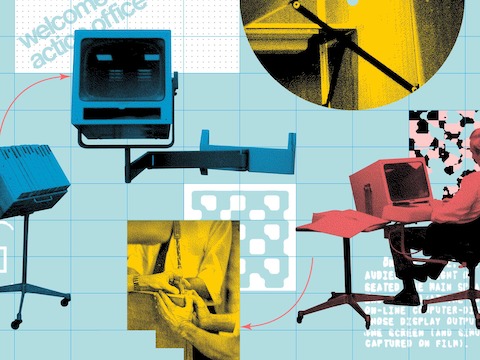
Kelley had a significant influence on the computer setup itself as well. In SRI’s initial design, the monitor and keyboard were one unit; Kelley’s feedback led them to design them as separate pieces. The computer as we know it had begun to take shape.
Ultimately, the separation of screen and console from the machine’s computational guts allowed Kelley to shift the design focus away from accommodating all the hardware and toward the user’s ultimate comfort. If Engelbart was advancing the mind through technology—“bootstrapping,” as he called it—Herman Miller was promoting its own kind of augmented body intelligence through furniture. The Demo was one of the first times that ground-up design research was used to create sympathetic furnishings for computer interaction (little surprise that SRI was such a willing partner—it installed an Action Office of its own in the run-up to the Demo).
Onstage, in San Francisco, the Eames Shell Chair modified for NLS provided a control seat for a new form of networked mind. If Charles and Ray Eames were interested in using technology to facilitate a better sit, Kelley and Engelbart devised how a better sit might catalyze the march of technology. By using the language of Action Office, Kelley’s work on the console chair and mousepad allowed NLS to evolve from technological curiosity into the centerpiece of a living, dynamic work setting.
The NLS was a precursor to much of the computing technology and interactivity that would emerge—just as Action Office established a similar legacy in office design. The SRI and Herman Miller teams developed innovations through a keen insight into people’s experiential interactions with their machines and spaces. Though the keyboard console and Eames chair remained one-off prototypes, the SRI and Herman Miller collaboration generated a preview of the way we work today.
“The emerging synthesis of UX and furniture design facilitated not just a new computer interface, but it made the whole technology more approachable and easier-to-use.”
